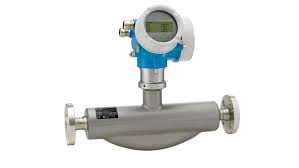Flow Indicators
Flow indicators are devices used to visually indicate the presence or rate of fluid flow in a system. They allow operators to observe whether flow is occurring and can provide an approximate flow rate without the need for complex instrumentation. Flow indicators are commonly used in various industries, including process plants, water treatment, HVAC systems, and more. Here are some common types of flow indicators:
1. Sight Glass Flow Indicators: Sight glasses are transparent or semi-transparent tubes or windows installed in a pipe or vessel through which fluid flows. The operator can visually observe the presence and movement of the fluid to confirm that flow is occurring.
2. Rotor Type Flow Indicators: Rotor flow indicators consist of a spinning rotor or impeller placed in the fluid flow path. The rotation of the rotor indicates that fluid flow is present.
3. Paddle Type Flow Indicators: Paddle flow indicators use a paddle or vane placed in the fluid flow. When fluid flows past the paddle, it moves, providing visual confirmation of flow.
4. Turbine Flow Indicators: Turbine flow indicators have a turbine or propeller inside the flow path. As fluid flows, the turbine spins, indicating the presence and approximate rate of flow.
5. Vane Flow Indicators: Vane flow indicators have a vane or flap that moves with the flow of fluid. The position of the vane provides a visual indication of fluid flow.
6. Pelton Wheel Flow Indicators: Pelton wheel flow indicators use a rotating pelton wheel that is driven by the fluid flow. The speed of the wheel indicates the flow rate.
7. Flow Indicator with Magnetic Float: These indicators use a float containing a magnet that rises or falls with fluid flow. The position of the magnet is used to indicate the flow rate.
8. Variable Area Flow Indicators (Rotameters): Rotameters have a tapered tube with a float that moves up or down based on the fluid flow. The flow rate is indicated by the position of the float in the tube.
Each type of flow indicator has its advantages and limitations, and the selection depends on the specific application, fluid type, flow range, visibility requirements, and compatibility with the fluid and the system. Flow indicators are valuable tools for ensuring that fluid is flowing as expected and can be used in conjunction with other flow measurement devices for comprehensive flow monitoring.

